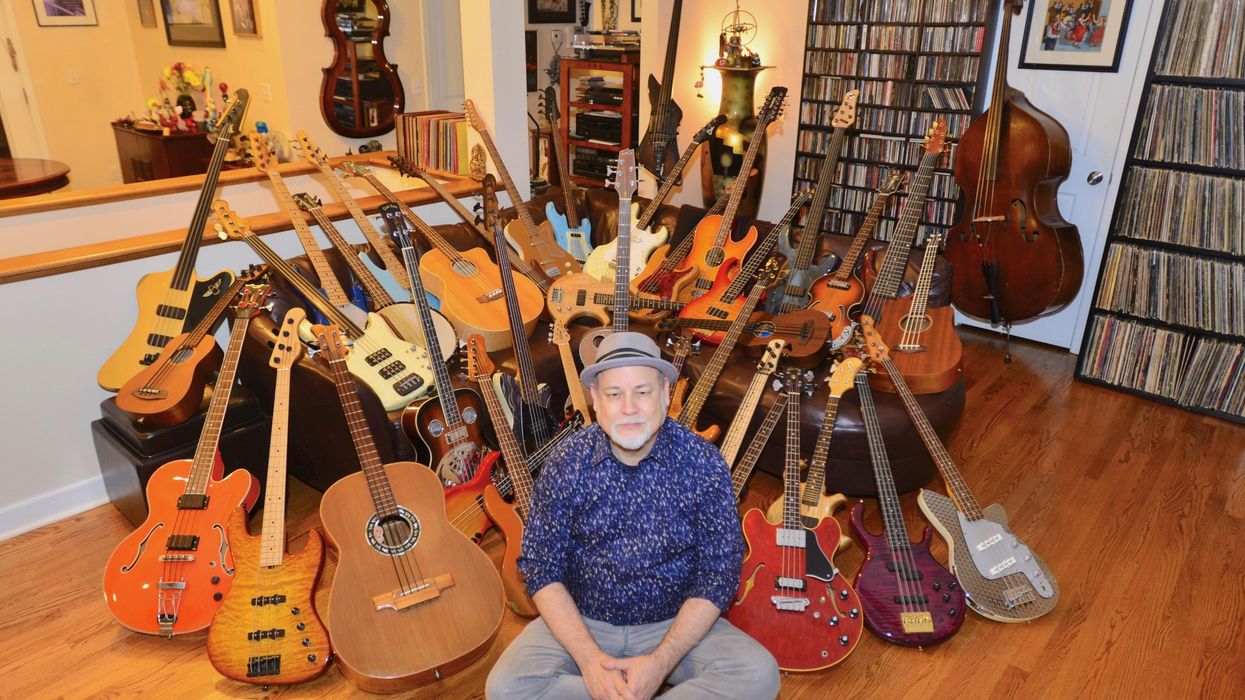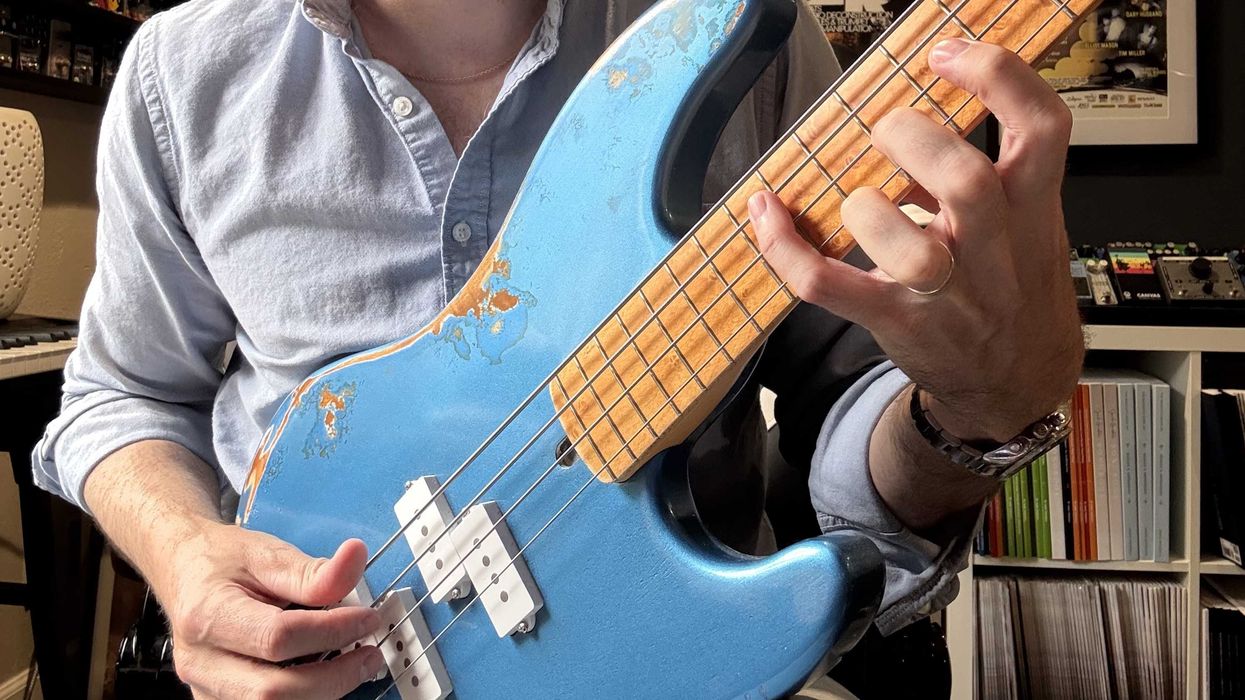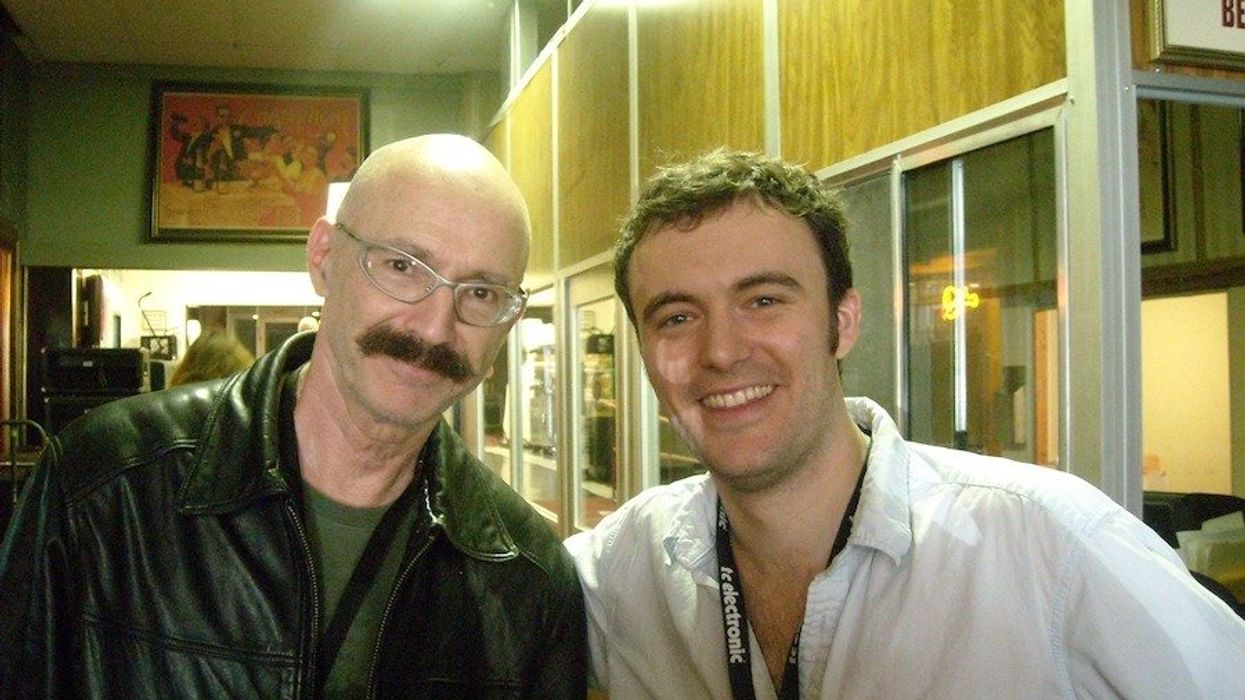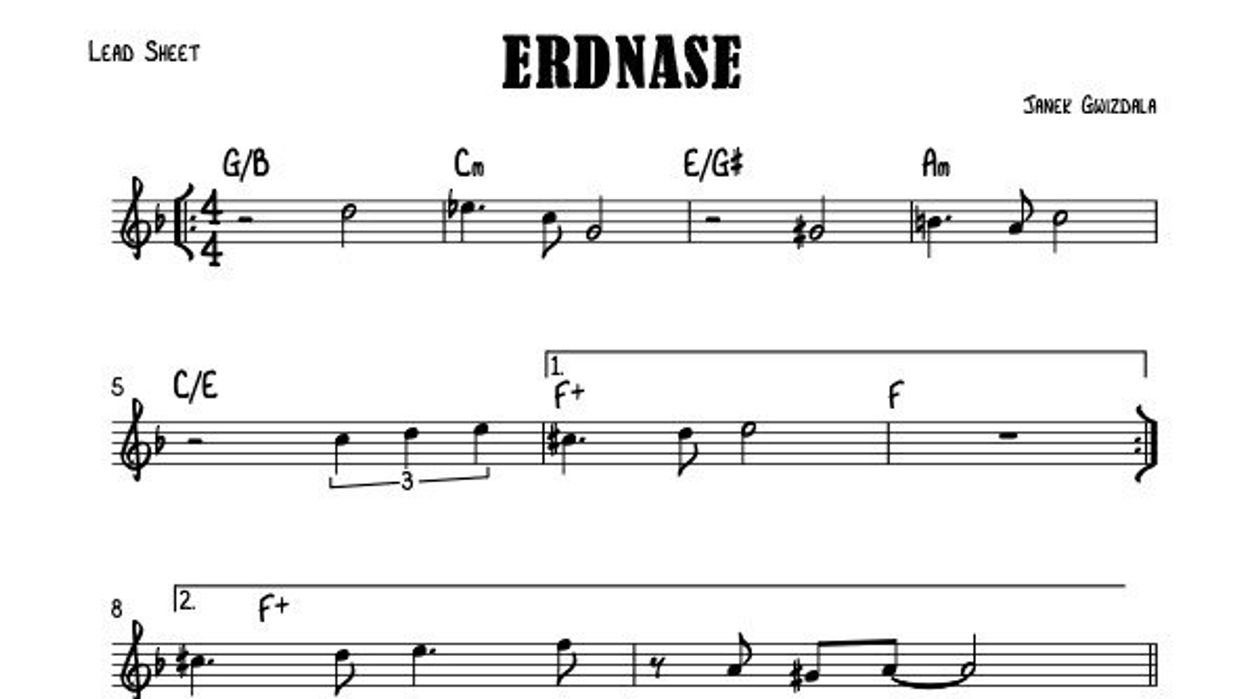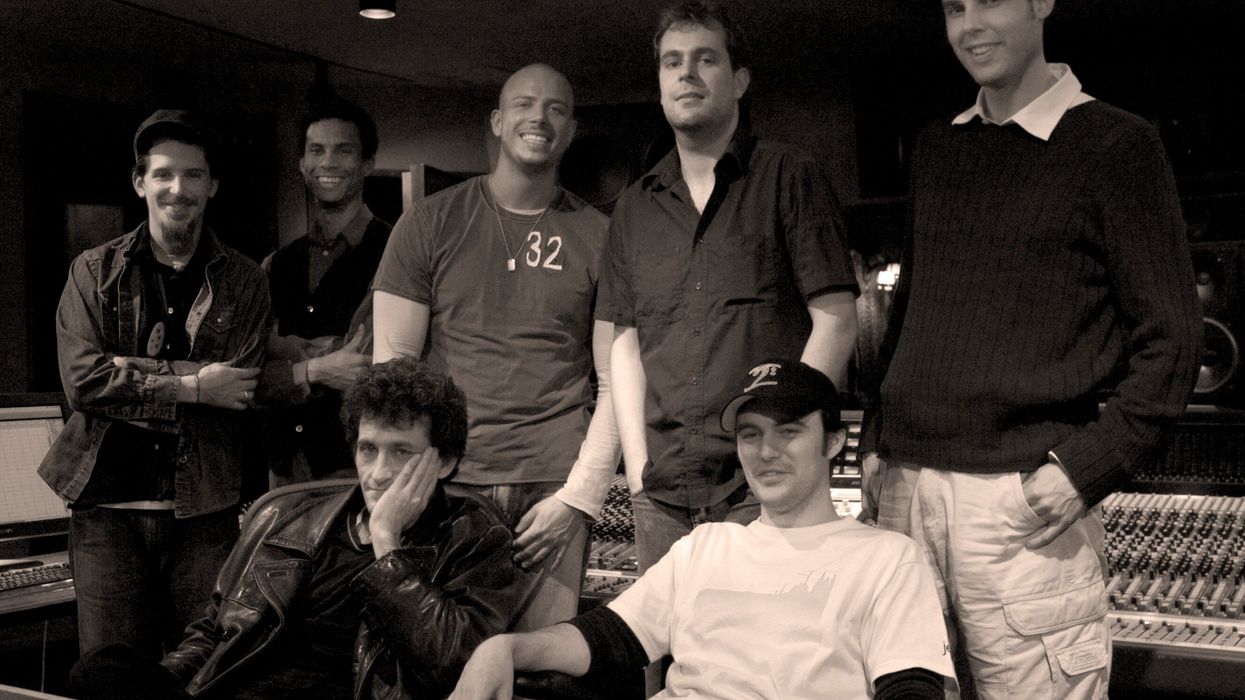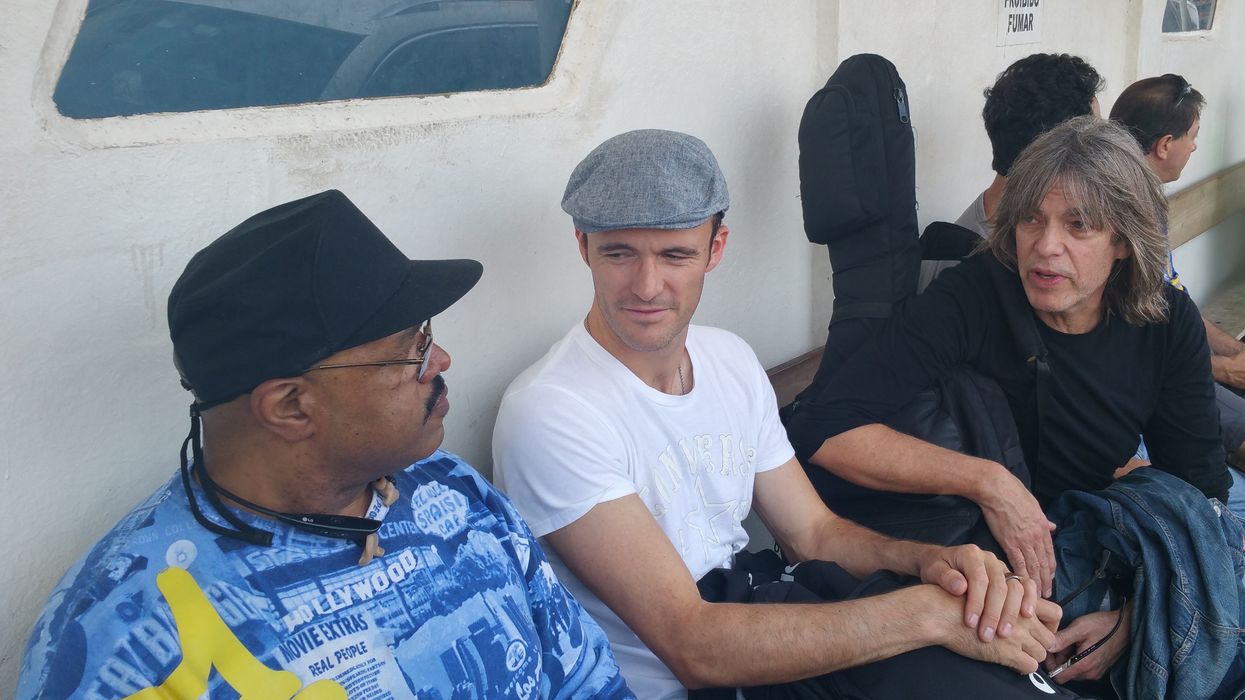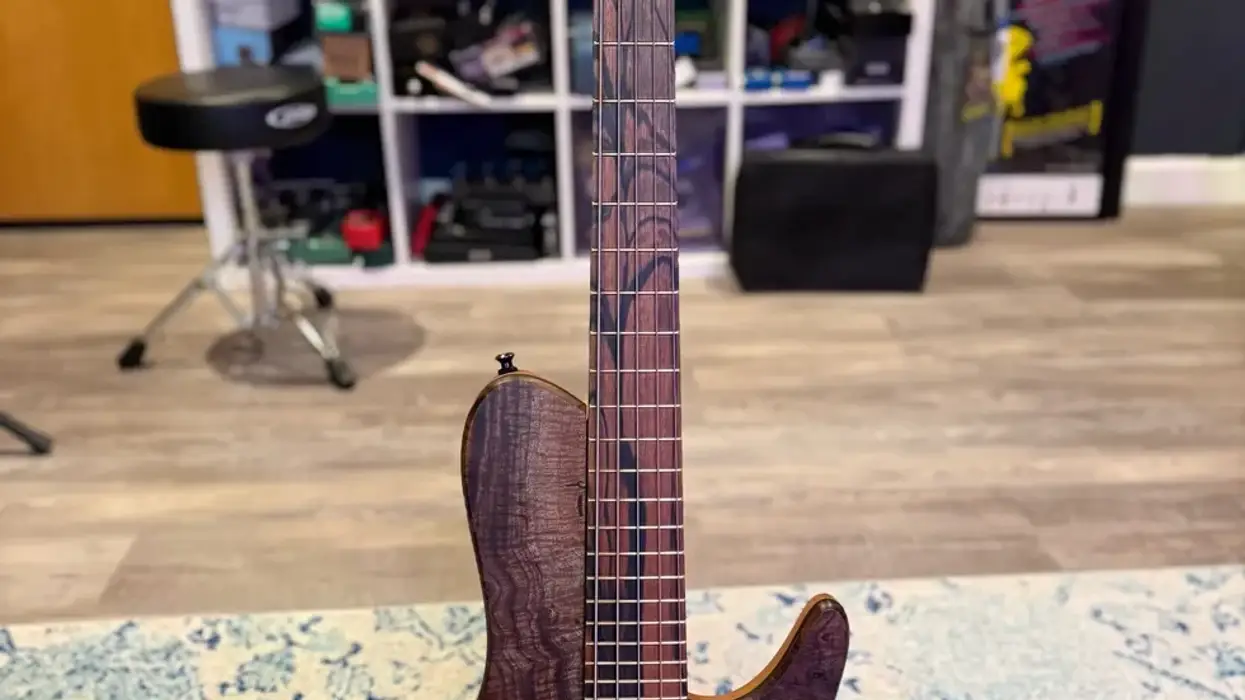From a very young age, I was captivated by music. Our military family was stationed in England from 1961 to 1964, so I got a two-year head start on the Beatles starting at age 6. When Cream came along, for the first time I was able to separate what the different players were doing, and my focus immediately landed on Jack Bruce. He wrote most of the songs, sang wonderfully, and drove the band with his bass. Playing along with Cream’s live recordings was a huge part of my initial self-training, and I never looked back.
The electric bass has a much shorter history than most instruments. I believe that this is a big reason why the evolution of bass playing continues in ways that were literally unimaginable when it began to replace the acoustic bass on pop and R&B recordings. Players like James Jamerson, Joe Osborn, Carol Kaye, Chuck Rainey, and David Hood made great songs even better with their bass lines, pocket, and tone. Playing in bands throughout my teenage years, I took every opportunity I could to learn from musicians who were more experienced than I was. Slowly, I began to understand the power of the bass to make everyone else sound better—or lead the way to a train wreck! That sense of responsibility was not lost on me. As I continued to play, listen, and learn, a gradual awareness of other elements came to the surface, including the three Ts: tone, timing, and taste.
I was ready to rock the world with busy lines and bass solos when I moved to Nashville in the late ’70s, and I was suddenly transported into the land of singer-songwriters. It was a huge awakening when I heard the lyrics of artists like Guy Clark, whose spare yet powerful stories and simple guitar changes opened up a whole new universe in reverse for me. It was a reset for sure, but gradually I found ways to combine my earlier energetic approach in different ways. Playing what’s right for a song is a very subjective thing.
“If the song calls for you to ramp up the energy and lead the way like Chris Squire, Bootsy Collins, Geddy Lee, Sting, Flea, Justin Chancellor, or so many others, trust yourself and go for it.”
Don Williams, whom I worked with for many years, was known as a man of few words, but he gave me some of the best musical advice I ever received. I had been with him for just a few months when he pulled me aside one night after a show, and quietly said, “Dave, you don’t have to play what’s on the records, just don’t throw me off when I’m singing.” In other words: It’s okay to be creative, but listen to what’s going on around you. I never forgot that lesson.
As I gradually got into recording work, in an environment where creativity is combined with efficiency and experimentation is sometimes, but not always, welcome, I focused on tone as a form of expression, trying to make every note count. As drum sounds got much bigger during the ’80s, string bass was pretty much off the table as an option in most situations. Inspired by German bassist Eberhard Weber, I bought an electric upright 5-string built by Harry Fleishman a few years earlier. That theoretically self-indulgent purchase gave me an opportunity to carve out a tone that would work with both big drums and acoustic instruments. It gave me an identifiable sound and led to me playing that bass on records with artists like Keith Whitley, Trisha Yearwood, Alison Krauss, Emmylou Harris, and the Chieftains.
In a world of constantly evolving and merging musical styles, the options can be almost overwhelming, so it’s important to trust yourself. Ultimately, you are making a series of choices every time you pick up the instrument. Whether it’s pick versus fingers versus thumb, or clean versus overdrive versus distortion, and so on … you are the boss of your role in the song you are playing. When the sonic surroundings you find yourself in change, so can you. It’s all about listening to what is going on around you and finding that sweet spot where you can bring the whole thing together while not attracting too much attention.
On the other hand, if the song calls for you to ramp up the energy and lead the way like Chris Squire, Bootsy Collins, Geddy Lee, Sting, Flea, Justin Chancellor, or so many others, trust yourself and go for it. Newer role models like Tal Wilkenfeld, Thundercat, and MonoNeon have raised the bar yet again. The beauty of it all is that the bass and its role keep evolving.
Right now, I guarantee there are young bassists of all descriptions we have not yet heard who are reinventing the bass and its role in new ways. That’s what bass players do—we are the glue that ties music together. Find your power and use it!
